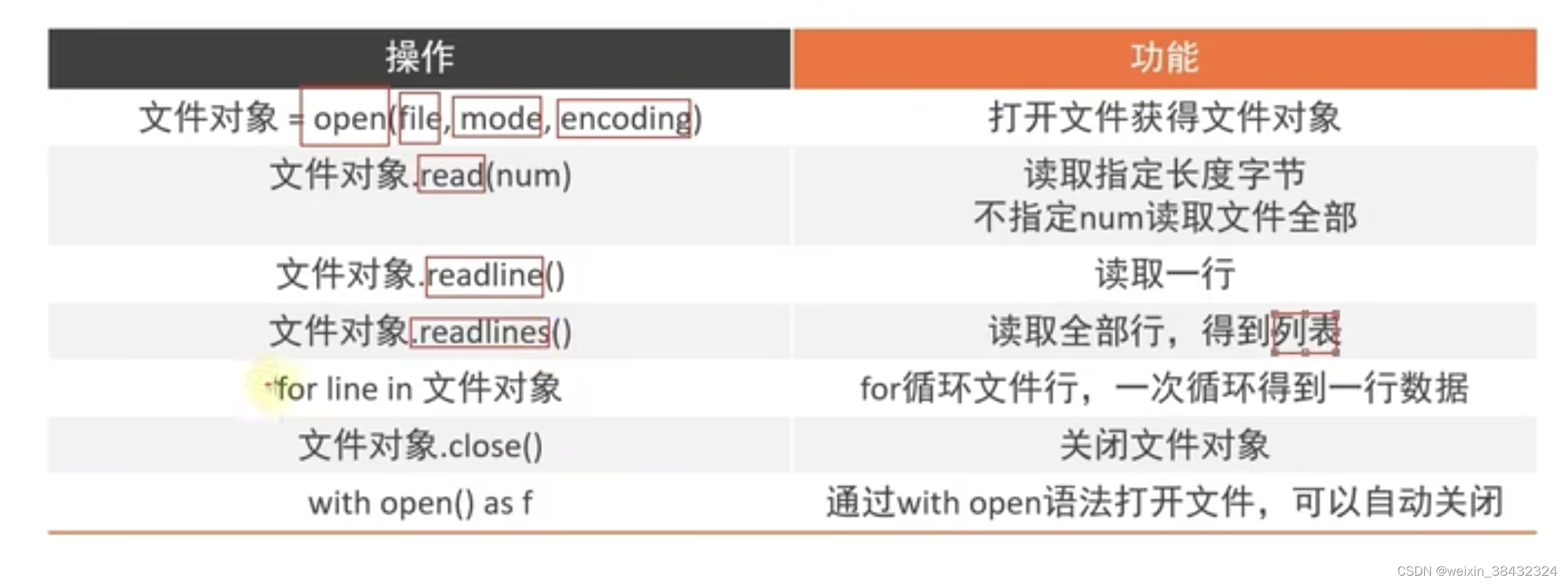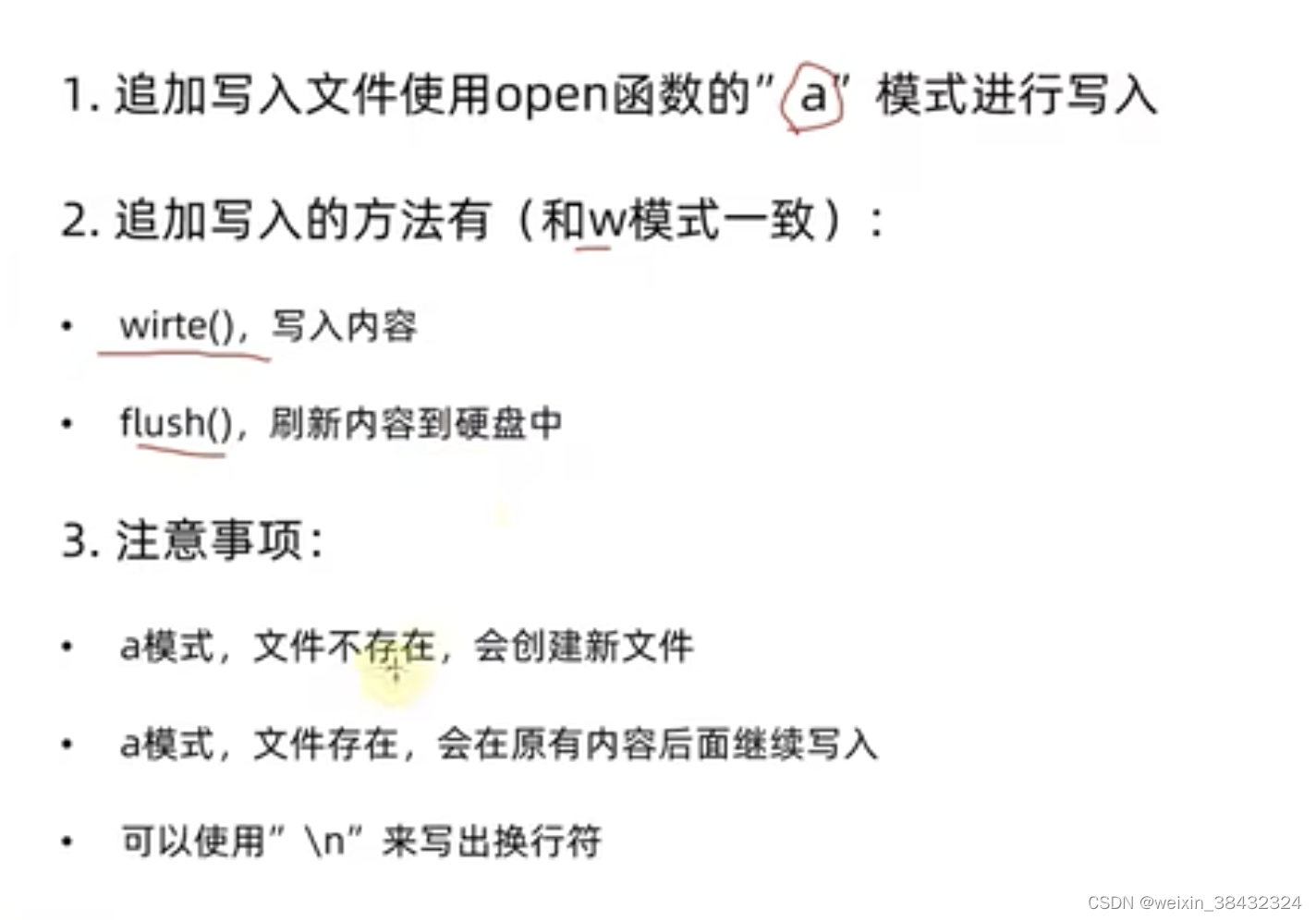open
"""
def open(file: FileDescriptorOrPath, //路径mode: OpenTextMode = "r", //设置打开文件的模式 r 以只读方式打开文件。文件的指针将会放在文件的开头。这是默认模式。 w 打开一个文件只用写入。如果该文件已存在则打开文件,并从开头编辑 原有内容会被删除。如果该文件不存在创建新文件。a 打开一个文件用于追加。如果该文件已存在,新的内容将会被写入到已有内容之后。如果该文件不存在 创建新文件进行写入。buffering: int = -1,encoding: str | None = None, 编码格式 推荐utf-8errors: str | None = None,newline: str | None = None,closefd: bool = True,opener: _Opener | None = None,
) -> TextIOWrapper
"""file = open("./01/filedemo.py","r",encoding="UTF-8")
print(type(file))
#读取部分内容
text = file.read(1024)
print(text)
#读取全部内容
text = file.read()
print("==============================================================")
file.seek(0)lines = file.readlines()
print(f"linestype={type(lines)} lines={lines}")
print("==================****************************============================================")file.seek(0)
#每次只读一行
line = file.readline()
print(f"linetype={type(line)} line={line}")#关闭 close()
file.close()print("=======")
print("=======")#
with open("./01/filedemo.py","r",encoding="UTF-8") as file:for line in file:print(f"type = {type(file)} line content = {line}")

write
#创建文件
file = open("./01/hello.txt","w",encoding="UTF-8")
#写入内存 注意 文件存在 会清空掉原来的内容 重新写 文件存在 直接写
file.write("hello python write")
#写入磁盘
file.flush()
#close 里面有调用 flush
file.close()


append
#创建文件
file = open("./01/hello.txt","a",encoding="UTF-8")
#写入内存 注意 文件存在 会清空掉原来的内容 重新写 文件存在 直接写
file.write("hello world hello python")
#写入磁盘
file.flush()
#close 里面有调用 flush
file.close()










)






)






